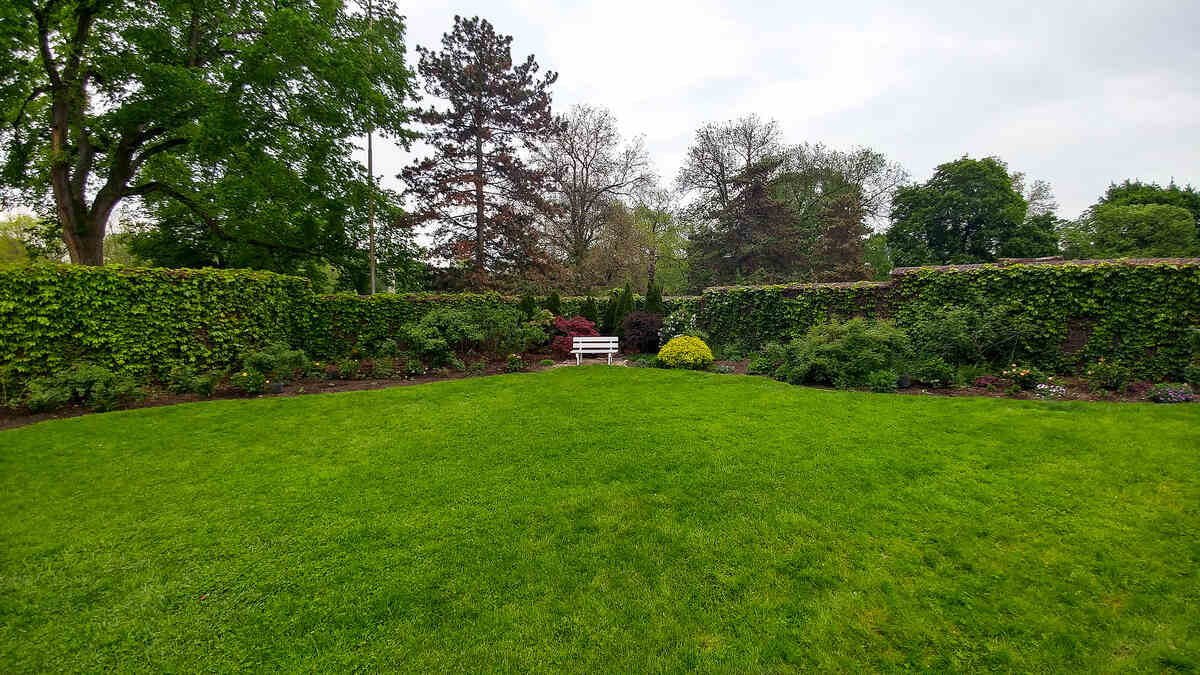
There are 2 million acres of lawn in Pennsylvania, with the average yard being 0.38 acres. All of these people growing all of these lawns have the same concern: What is the best grass seed for Pennsylvania?
Some 1.5 million if those acres are covered with the famed Hazleton Soil, a deep, well-drained sandy loam soil. Homeowners across America test their soil, make adjustments to it, then test it again, all to end up with the soil that Pennsylvanians get to walk on every day.
Pennsylvania is mostly in the cool-season grass zone, but the farm-rich area across the Southern part of the state and the population-rich Philadelphia area is in the transition zone, where warm-season grasses can be considered.
If you want a fast overview, skip ahead to our guide on how to choose the best type of grass for Pennsylvania.
Grass Growing Zones in Pennsylvania
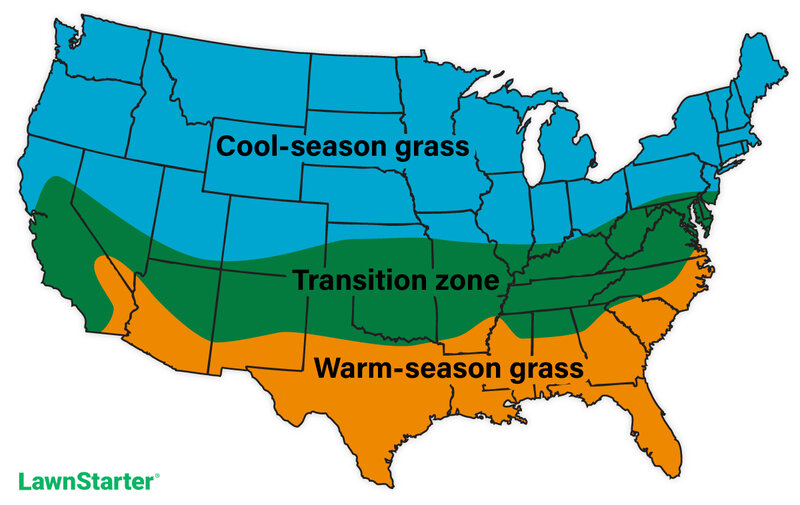
| Warm-Season Grass | Cool-Season Grass | |
| During the summer | Grow their best | Go dormant |
| During the winter | Go dormant | Suspend the growth that started in the fall |
| To establish | Sod, seed, or plugs | Seed or sod |
| In Pennsylvania’s climate | Better in the summer | Will need more water to make it through the summer |
| Annual growth | Will start when soil temperatures reach 60 F; usually mid-April | Should start in March, when soil temperatures reach 40 F |
| Dormant period | When soil or air temperatures fall below 50-55 F | When temperatures hit 90 F in the top inch of soil |
Best Grasses for Pennsylvania: Cool-Season
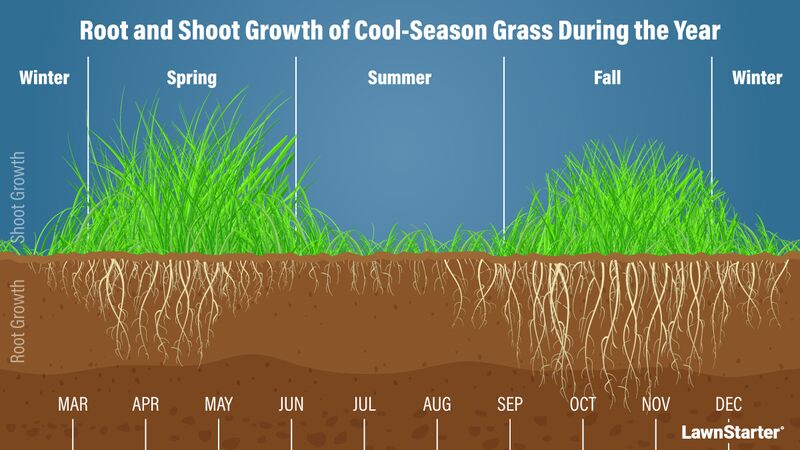
Kentucky Bluegrass (Poa pratensis)

Kentucky bluegrass (KBG) is both attractive for its dark green color and hardy for home lawns, as well as parks and ballfields. Its rhizomes (underground horizontal stems) enable it to recover from use much faster than the other cool-season grasses. However, high performance requires high maintenance: KBG needs consistent irrigation, mowing, fertilizing, and dethatching.
A pro’s tip: Some seed is labeled “common Kentucky bluegrass.” It may cost less, but it isn’t as green, as strong, or as resistant to disease as pedigreed Kentucky bluegrass. At one store, the “common” seed came out to 37 cents per ounce, while the name-brand was 61 cents per ounce.
Classification: Cool-season grass
Spreads by: Rhizomes
Shade tolerance: Low
Drought tolerance: Moderate
Foot traffic tolerance: Moderate
Maintenance needs: Moderate mowing frequency and high fertilization needs.
Mowing height: Set mowing height between 2.5 and 3.5 inches.
Potential for disease: Moderate to high; prone to several diseases, such as dollar spot, leaf spot, necrotic ring spot, summer patch, and stripe smut.
Soil pH: 6-7.5
Soil type: Performs best in well-drained, heavy soils with high fertility.
Grass Seed Options:
– Jonathan Green (11970) Blue Panther Kentucky Bluegrass Grass Seed (3 lbs.)
– SeedRanch Midnight Kentucky Bluegrass Seed (5 lbs.)
Perennial Ryegrass (Lolium perenne)
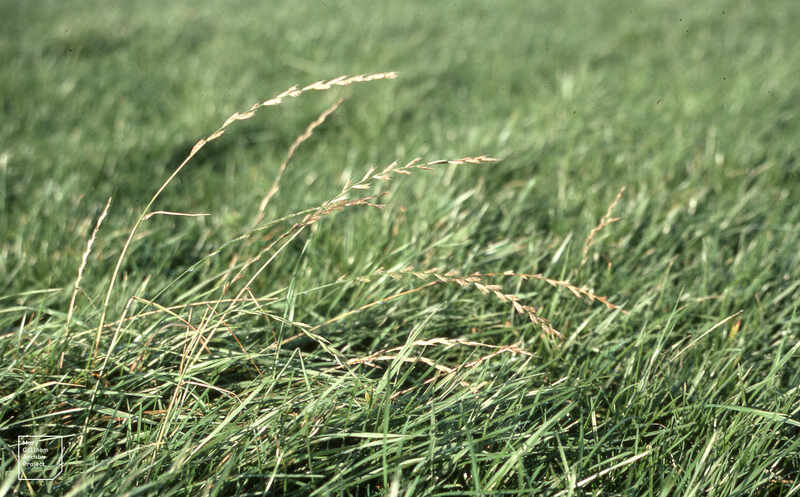
Photo Credit: Dr Mary Gillham Archive Project / Flickr / CC BY 2.0
Perennial ryegrass is a bunch-type grass with a beautiful dark green color that is popular in the cool-season growing zone of the U.S. Since it does not have rhizomes or stolons, it doesn’t recover from use (kids playing, pets scampering about, having the neighbors over for a lawn party) as quickly as Kentucky bluegrass.
However, that also means perennial ryegrass produces little to no thatch. This grass germinates fast and is often used in a grass seed mix with fine fescues and/or KBG.
A pro’s tip: Recently, perennial ryegrass has been responding well to endophyte (beneficial fungi that are developed to grow within the seed), producing varieties that are especially resistant to pests, including the most common ones in the state, white grubs and chinch bugs.
Classification: Cool-season grass
Spreads by: Has a bunch-type growth habit
Shade tolerance: Low
Drought tolerance: Low
Foot traffic tolerance: High
Maintenance needs: Moderate mowing and fertilization requirements. Thatch is not significant.
Mowing height: Set mowing height to 1.5 to 2.5 inches
Potential for disease: High. Common diseases include gray leaf spot, red thread, and leaf spot/melting-out.
Soil pH: Can grow in soils with a pH between 5 and 8, but prefers between 6 and 7.
Soil type: Prefers good drainage and fertility, but can tolerate some poor drainage.
Grass Seed Options:
– Outsidepride Perennial Ryegrass Seed (5 lbs.)
– Eretz ProTurf Perennial Ryegrass Fine Lawn Seed (choose your size)
Fine Fescue (Festuca spp.)
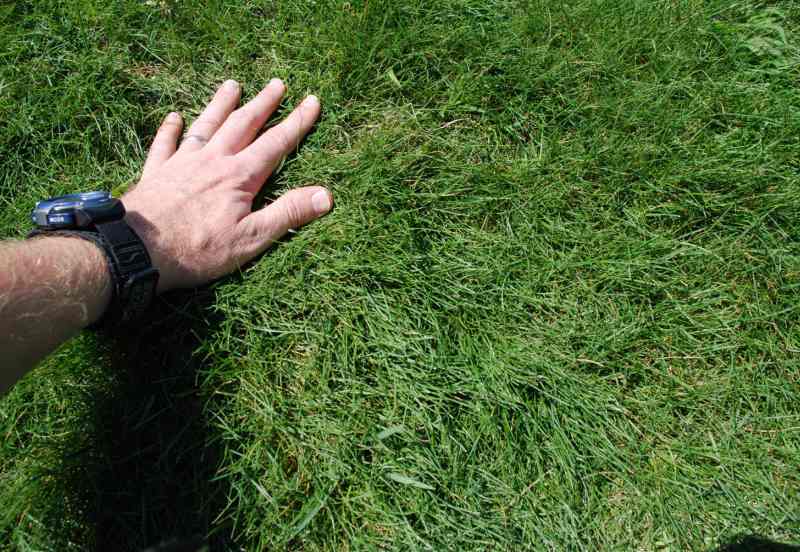
Aaron J. Patton, Ph.D. / Turfgrass Extension Specialist at Purdue University
The fine fescues (creeping red fescue, hard fescue, Chewings fescue, and sheep fescue are the ones best suited for Pennsylvania) are being used more than ever as a good-looking, low-maintenance lawn or along roadsides. They are not a good choice if you want to walk on it (ballfields simply don’t use it), but are good to look at and excel in the shade.
Fine fescues are often sold in a seed mix with two or more fine fescues, Kentucky bluegrass, and/or perennial ryegrass for lawns that have partial shade.
Some pro tips:
- Creeping red fescue produces rhizomes, so it will fill in thin areas of turf. It is disease-prone.
- Chewings fescue doesn’t produce rhizomes and takes a long time to establish. Wildlife will feed on it, but it offers little in the way of nutrition. But it is low maintenance.
- Hard fescue grows slowly, but once it is established, it needs little water. Not considered attractive, it is used mostly on roadsides.
- Sheep fescue has a dense root system that makes it a good ground cover, but it isn’t considered attractive, so you see it on roadsides, not yards.
Classification: Cool-season grass
Spreads by: Creeping red fescue spreads by rhizomes, while other fine fescues are bunch-type grasses, such as Chewings, hard, and sheep fescues.
Shade tolerance: Moderate to High, depending on species
Drought tolerance: Moderate to High, depending on species
Foot traffic tolerance: Low to Moderate, depending on species
Maintenance needs: Low fertilizer and mowing needs
Mowing height: Set mowing height between 2.5 and 4 inches, depending on species.
Potential for disease: Moderate. Common diseases include red thread, leaf spot, dollar spot, summer patch, and powdery mildew.
Soil pH: 6-6.5
Soil type: Will not perform well in wet soil conditions. Prefers drier soils and tolerates a wide range of soil types. Tolerates low fertility soils.
Grass Seed Options:
– Outsidepride Legacy Fine Fescue Grass Seed (5 lbs.)
– Eretz Creeping Red Fine Fescue Seed (choose your size)
– Outsidepride Creeping Red Fine Fescue Grass Seed (25 lbs.)
– Outsidepride Hard Fine Fescue Grass Seed (10 lbs.)
Tall Fescue (Festuca arundinacea)

Aaron J. Patton, Ph.D. / Turfgrass Extension Specialist at Purdue University
Tall fescue is an excellent lawn grass for the soil and weather conditions of Pennsylvania lawns. The use of it has shot up a lot in the last 40 years to the point where it can be found at homes, parks, playgrounds, and ballfields. A versatile grass, it does well in full sun or partial shade.
Tall fescue has long been vulnerable to brown patch. The cultivars being developed over the last 40 years have made it even more susceptible. However, the newer, turf-type tall fescues are still your best bet for a high-quality tall fescue lawn. Avoid Kentucky-31, Alta, and other pasture varieties.
Classification: Cool-season grass
Spreads by: Produces short rhizomes but has a bunch-type growth habit
Shade tolerance: Moderate
Drought tolerance: Moderate to High
Foot traffic tolerance: Moderate
Maintenance needs: Frequent mowing. Does not produce significant thatch. Worn areas require overseeding in the fall as it won’t self-repair.
Mowing height: Set mowing height to 2 inches when grass reaches 3 inches tall.
Potential for disease: Tolerant of most diseases when properly maintained.
Soil pH: 5.5-6.5
Soil type: Adapted to a wide range of soil conditions, but prefers fertile clay soils with good drainage.
Grass Seed Options:
– Triple-Play Tall Fescue Grass Seed Blend (5000 sq ft)
– Eretz Kentucky 31 K31 Tall Fescue Grass Seed (choose your size)
– Pennington The Rebels Tall Fescue Grass Seed Mix (7 lb.)
Bentgrasses (Agrostis spp.)
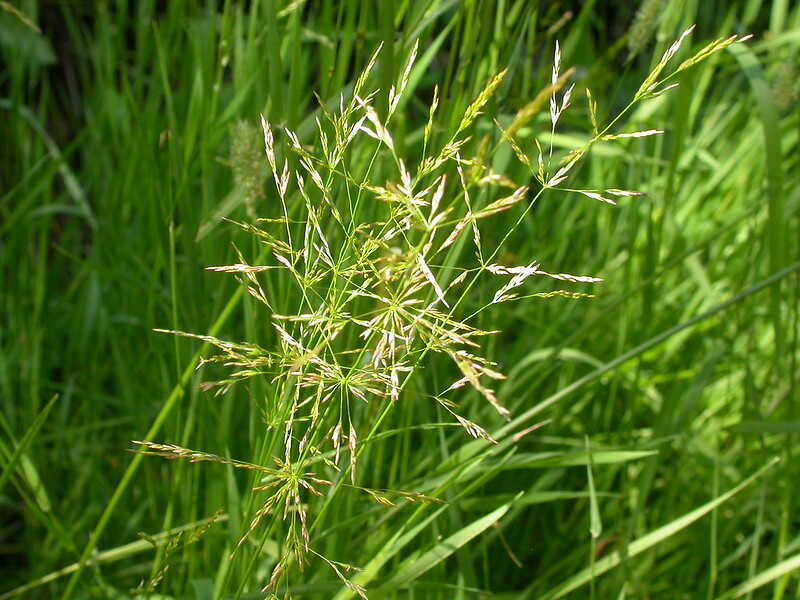
The bentgrasses (creeping bentgrass and colonial bentgrass) are regularly found on golf courses, but because they are high maintenance, they are not often found on home lawns. They need frequent watering, mowing, aerating, dethatching, and fertilizing, plus the expertise to know when and how.
Creeping bentgrass is vulnerable to diseases, especially dollar spot, the most common disease striking grass in Pennsylvania. Colonial bentgrass has been developed to have resistance to dollar spot, but it is more susceptible to brown patch.
Creeping Bentgrass
Classification: Cool-season grass
Spreads by: Stolons
Shade tolerance: Moderate
Drought tolerance: Low
Foot traffic tolerance: Moderate
Maintenance needs: Requires frequent watering, fertilizing, dethatching, and mowing.
Mowing height: Set the mowing height between 0.5 and 0.125 inches.
Potential for disease: High disease potential. Common infections include dollar spot and brown patch.
Soil pH: 5.5-6.5
Soil type: Prefers moist soils with good drainage.
Colonial Bentgrass
Classification: Cool-season grass
Spreads by: Short rhizomes that may bring about short stolons
Shade tolerance: Moderate
Drought tolerance: Low
Traffic tolerance: Low
Maintenance needs: Moderate to high. Best when mowed short, at least once weekly.
Mowing height: Set the mowing height between 0.5 and 1 inch.
Potential for Disease: Moderate. Susceptible to Fusarium patch in the winter. Vulnerable to Take-all patch when young but severity decreases as turf develops.
Soil pH: 5.5-6.5
Soil type: Tolerates poor soil conditions, but prefers moist and fertile soil.
Best Grass for Pennsylvania: Warm-Season
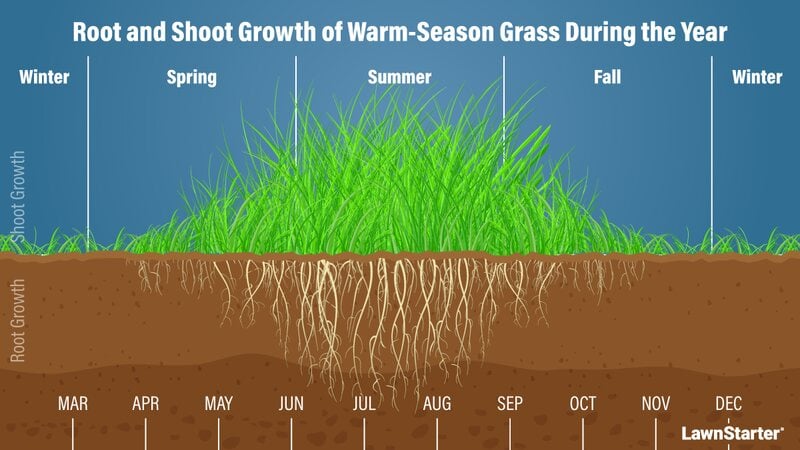
Zoysiagrass (Zoysia spp.)
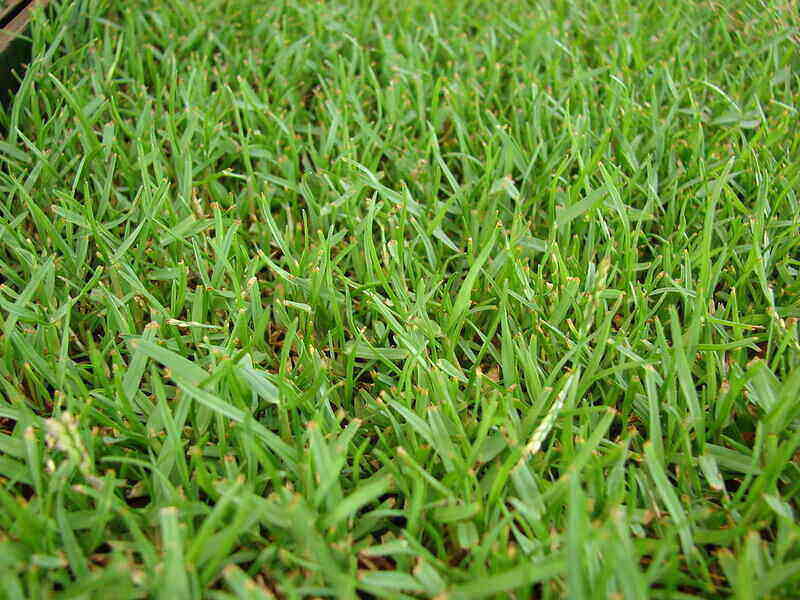
Zoysiagrass is the only warm-season turfgrass that can make it through a Pennsylvania winter, and then only in the southern-most portions of the state. Some use it for their homes, especially for high-traffic areas. Keep in mind that Zoysia will go dormant with frost and not green up again until late in the springtime or early summer, so the lawn will be brown for much of the year.
Zoysiagrass produces a lot of thatch, so it needs dethatching on a regular basis. The Meyer cultivar is the only one recommended for Pennsylvania, but as a slow-growing grass, it may take several years for these sod plugs to become well established in your lawn.
A pro’s tip: Zoysiagrass has a wiry thickness that requires sharp blades on the mowers for a good cut.
Classification: Warm-season grass
Spreads by: Stolons and rhizomes
Shade tolerance: Moderate
Drought tolerance: Moderate to High
Foot traffic tolerance: High, but recovers slowly from damage
Maintenance needs: Low nitrogen fertilization requirements, although, it’s prone to thatch build-up.
Mowing height: Set mowing height between 1 and 2 inches.
Potential for disease: Good disease tolerance overall
Soil pH: 6-6.5
Soil type: Well-draining, some cultivars are more tolerant of a wide range of soils than others.
Grass Plug and Seed Options:
– Zoysia Plugs (50 Large Grass Plugs)
– Zoysia Plugs (50 Full & Lush Grass Plugs)
– Zoysia Plugs (100 Plugs)
– Zenith Zoysia Grass Seeds (1/8 lb. of seeds)
How to Choose the Best Type of Grass for Pennsylvania
The grass type or types you choose will depend on a number of factors. Here are a few important ones to consider for the best chance of a healthy lawn.
Drought Tolerance
Pennsylvania is having water issues, but so far those issues are over the quality of its water, not the quantity. But the Pennsylvania Department of Conservation and Natural Resources states on its website, “The Commonwealth is not immune to supply issues, and the scarcity of water will likely be a challenge of the future.”
The state already offers a Lawn Conversion Program, encouraging even homeowners to convert lawns into woods or meadows.
With that in mind, when it comes time to select a grass for your lawn, you should take drought-tolerant grasses* into account.
- High tolerance for drought: Fine fescue
- Medium/medium to high tolerance: Kentucky bluegrass, tall fescue, Zoysiagrass
- Low tolerance: Colonial bentgrass, creeping bentgrass, perennial ryegrass
*While the terms drought tolerant and drought resistant are known to be used interchangeably, drought-resistant grasses and plants are better suited for surviving longer periods without water. The grasses listed as drought-resistant are usually native grasses, ones that have survived because they adapted to the area.
What Your Lawn Will Look Like
The first rule for selecting a grass for your home is that it should look good. Right? Some 88 percent of homeowners surveyed for an article in the Journal of Urban Ecology identified beauty as the key element in selecting a lawn.
Other characteristics are important, too, but if it doesn’t look good, homeowners can turn to other options, including:
But for turfgrass, here are your options:
- High quality appearance: Colonial bentgrass, Creeping bentgrass, Kentucky bluegrass, fine fescue
- Medium appearance: Perennial ryegrass (can handle cold but not ice, an issue throughout Pennsylvania), tall fescue
- Not considered to be attractive: Zoysiagrass (it doesn’t stay green as long as other grasses)
How You Will Use Your Lawn
Do you want a lush lawn for the kids to play on? How about one where you can invite batches of friends for a lawn party? Or one that keeps the soil from washing away? How about one that is a lovely green lawn to look at? All are valid. But call for different grasses.
- High tolerance for traffic: Perennial ryegrass, Zoysiagrass
- Medium tolerance: Creeping bentgrass, Kentucky bluegrass, tall fescue
- Low tolerance: Colonial bentgrass, fine fescue
Resistance to Pests*
The best way to hold off lawn pests is to be observant; does the grass spring back up when it is walked on? Are racoons and squirrels feeding off it? And if you see grubs or brown spots, don’t wait to take action.
Science is improving the grass being used by homeowners, often by adding endophytes, a fungi that grows inside the grass and helps fight off pests. Endophytes are a big reason for the growth in use of perennial ryegrass and the fescues. But a warning: They don’t always work. For example, Kentucky bluegrass can’t tolerate them.
- High resistance to pests: Zoysiagrass
- High resistance when endophyte-enhanced: Fine fescue, tall fescue, perennial ryegrass
- Low resistance: Colonial bentgrass, creeping bentgrass, Kentucky bluegrass, perennial ryegrass (without endophytes)
*Can vary widely depending on the cultivar and the climate.
Sun or Shade
Homeowners enjoy having trees and fences on their property, let alone bushes and ground cover. But such wonders can deny the grass the sun it needs to thrive. Grass does best when it gets six hours or more of direct sunlight. It struggles when it gets less than four hours.
In Pennsylvania, grass growing in even partial shade finds itself in competition for water, nutrients, and light. If you have a good deal of shade, you should take that into account when selecting your grass.
- Known as the “shade grass”: Fine fescue (especially Chewings fescue)
- If you have a lot of sunny area, but some shady areas: Colonial bentgrass, creeping bentgrass, Zoysiagrass, tall fescue
- Good in the full sun, not in the shade: Kentucky bluegrass, perennial ryegrass
A Call to Action
Pennsylvania is a good place to grow grass, but you can’t be casual about it. Take the time to select the right grass for you. Decide if you want your lawn to be a do-it-yourself project, or, considering the commitment in time and cost, you want to bring in a professional.
If you want the help of a professional lawn care service, you can find one through LawnStarter.
We have trusted lawn care pros in Philadelphia, Pittsburgh, Allentown, Reading, Bethlehem, Harrisburg, York, and Carlisle, among other places around the state.
Main Image Credit: sk / Flickr / CC BY-ND 2.0
LawnStarter participates in the Amazon Services LLC Associates Program, an affiliate advertising program. LawnStarter may earn revenue from products promoted in this article.